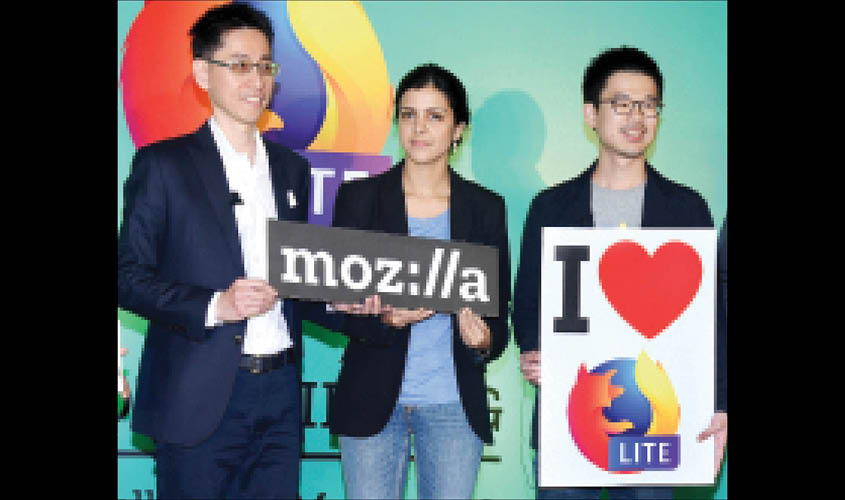The evolution of the World Wide Web, which celebrated its 30th anniversary this week, can be traced using the web browser as a parameter. There was an age that belonged to Microsoft’s Internet Explorer, an age that belonged to Apple’s Safari, and an age, probably our own, dominated by the Google Chrome.
In this competitive market, it is naturally tough for new players to survive. But in its heyday, the US-based firm Mozilla did shake up this segment with its Firefox web browser, which became market leader in a short span after its inception.
To regain that stature, Mozilla is structuring its business strategy by offering upgraded products. On 13 March, the brand launched the Mozilla Firefox Lite at an event at The Oberoi, New Delhi.
The newly launched application is designed to be faster, lighter and provides more online privacy to users. This smartphone browser takes up only 4MB of storage space, and at the same time it clocks lightening quick processing speeds.
In conversation with Guardian 20, Joe Cheng, Product Head, Mozilla Asia, talked about why users around the world would want to switch to Mozilla Firefox Lite. “Our biggest strength is that the application is really light. Another thing that makes our product better is the “tracking protection” feature. Whenever you search anything on Google, it starts appearing on other platforms that you use like Facebook. This happens because websites have trackers that track your activities on the browser, and they follow you on other websites. What we have done with tracking protection is block these trackers by default. Since most users use default settings, we are protecting users’ privacy by default. For other browsers—like UC Browser or Google Chrome—even though the records are not saved on phones, because of the tracking technology and the cookies, whatever you are doing in private browsing can still follow you around.”
These trackers also consume a lot of data, and with the Firefox Lite that’s never an issue.
About the challenges the brand has faced in establishing itself in the Indian market, Cheng said, “We are a new player here. We do face several challenges, like trying to get more users and getting good content on our browsers.”
With its new browser, Mozilla is also offering an improved search function and more add-on content. “We are trying to get more updates for games, videos, e-commerce, and other content that might interest our users. They should like our product, and that is what we want to focus on,” Cheng said.
Web companies who have managed to gain a foothold in India have done so by focusing on regional ecosystems. Google’s expansion of its language services to the vernacular space is one example of that. With the Firefox Lite, Mozilla has also ventured out from English to regional Indian languages.
Cheng said, “Right now we only have one Indian language, Hindi. But we are working on tapping into more local languages, as India is a huge market for us and it is quite diverse. It presents us with many opportunities.”
What should we expect next from the brand? According to Cheng, “To get good content on our browser, we are partnering with different brands here in India. Many brands are willing to work with us and this makes us confident. I think we are working in the right direction. We will continue to build such partnerships that will help us build a better live-feed experience.
To add content to their browser, Mozilla has now entered into a partnership with Times Internet Limited and Dainik Bhaskar Digital. Aiming to increase the reach of their product, they have also tied up with MoMagic, a leading marketing company.

